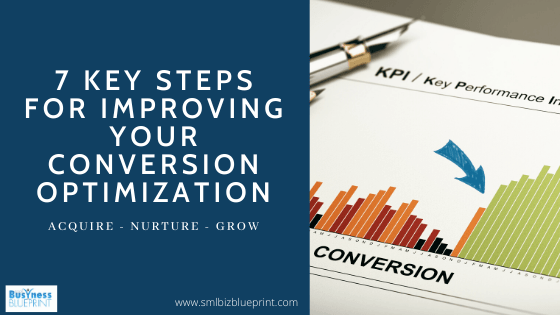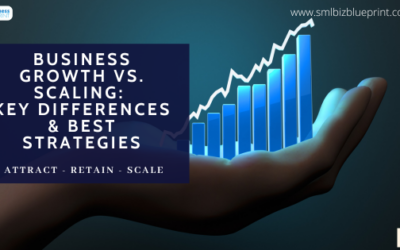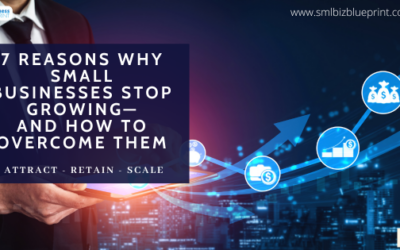Conversion optimization is about growth.

It is about implementing a process that continually reviews your marketing activities to ensure that they are customer focussed and responsive to the desires and needs of your customers.
Let’s look at the numbers for why conversion optimization is important to your business.
If you are currently converting 25% of your leads to sales then a 5% increase in your conversion ratio is equivalent to increasing your leads by 20%.
What would prefer to work on increasing your leads by 20% or improving your conversion ratio by 5%?
What would cost you more money? What will give you the greater return?
This is where you will use data to make decisions, that create insight that leads to informed and better decision making which leads to better results which leads to improved growth.
You analyse the performance of your business with data at your fingerprints. Data that is readily accessible to any business today.
You start by figuring out which pages cause the biggest drop-offs – where the flow is stuck. Once you understand WHERE the problem is, you proceed to identifying WHAT the problem is.
You need to move away from random guessing, and focus instead on KNOWING what’s happening, and understanding WHY.
Conversion optimization will be very effective once you move away from testing stuff that doesn’t matter, and start approaching it like the process that it is.
When you begin to work on your conversion optimization don’t think in terms of tactics, think in terms of processes.

Let’s just quickly cover what the difference is between a process and system.
Process versus System
Stop thinking in tactics, and start thinking in processes. As the saying goes, if
you can’t describe what you’re doing as a process, you don’t know what you’re doing.
A process is a conceptual sequence of events that enables a person in a business to do what they do. For example, the way a customer support request gets handled is a process. There’s an input, some work sequences, and an output.
Systems are what’s used to execute the process. Let’s follow the same example to discuss the systems used here . You receive a request via online form then your CRM software locates the record and sends the link using your email service.
As a general rule, processes address effectiveness, whereas systems address efficiency.
If you are doing the right but slower than it could otherwise be done, work on your systems.
If you’re working fast but not really getting anywhere, work on your processes.
Default to processes if you’re not sure either way.
It is easier to streamline the process and eliminate unnecessary handling and steps in dealing with different operations of your business, i.e. sales, customer service etc.
Once your process is set up then you look to a system to improve your business performance and efficiency. This is where automation will help you.
With conversion optimisation you could ask yourself these questions:
How do we optimise our website so that our business will grow?
Which headline performs best at attracting our ideal client?
How do our landing pages perform?
Is it easy for a customer to buy our product or service?
Is it easy for a customer to complete an online form?
To implement conversion optimization, you first need to carry out research to diagnose your website’s problems. You’ll need to understand a lot about your visitors and how they interact with your website.
Set goals → Set up measurement and gather data → Analyze data → Turn data into insights → Turn insights into prioritized hypotheses → Test your hypotheses → Get data from tests → Back to data analysis.
Your visitors’ attention is limited. You must treat it preciously.
Conversion solutions are highly targeted; the problems are like locks—the solutions like keys
You seek to understand your customers better – their needs, sources of hesitation,conversations going on inside their minds.
You gather whatever quantifiable data you can to understand what people are doing on the site, and the impact each individual widget or form field has on the revenue.
Your customers leave fingerprints. They leave you clues on what they like and don’t like. Are you in tune with your customers? Are you checking in with your customers?
There’s no universally best product page layout, no “best home page design” layout. There are no things that always work. You will only know what works best by testing.
Your goal is to acquire your customers more cheaply, from any channel than your competitors then you can grow your business faster then your competitors.
Overall it is about better marketing, a more detailed and focussed marketing system

You need to make conversion rates your number-one priority for these three reasons:
1 There’s lots of room for improvement. Most websites are losing buckets of money every day because they do an atrocious job of selling products or services to their visitors.
2 Paid search will keep getting more competitive. And increasing your bids is not the answer.
3 A/B testing software is now highly affordable. A/B testing software allows you to test changes to your website—and tells you which changes brought in the most customers.
If you double your website’s conversion rate, you will halve your “cost-per-acquisition” (CPA). (By the way, CPA means how much it costs to get each new customer.)
7 Key Steps For Improving Your Conversion Optimization
1. Technical/Website
The first step is the operation and performance of your website. Do a speed check for responsiveness and speed
Know how fast your website loads on different browsers and different devices.
Understand your customers’ experience in different situations with different browsers and devices.
Each browser may give a different experience for your customers.
Seek to understand your customers better.
Use Google Analytics to give you an insight into the performance of your website.
This may not be something you do every week but you should conduct a regular review of your websites performance.
2. Analytics
Investigate your website to figure out which pages cause the biggest drop offs.
Once you understand where the problem is, you proceed to identify what the problem is.
Use the data showing where customers drop off to look for improvements.
Set up analytics to see where you are leaking money, where customers are dropping off.
Investigate where you are losing dollars or people leaving your site.
3. Customer Interaction
Use heat maps to see how customers or visitors are using your website.
We all see our own website through rose coloured glasses. You need to step away from this and see how customers use your website.
What might be clear to you may not be clear to a visitor to your site.
Check to see what people click on
Check to see what attracts their attention, gets their focus, what they don’t look at

4. Customer Feedback
Use Customer Surveys and Exit Surveys.
Use either a pop-up when they exit or on page surveys
Ask for info you can act on
Start learning about friction – why your customers fear, doubts, hesitate.
Your goal is to reduce the friction, make it easier to buy or sign up
Determine the most wanted action for a page, have a question that asks about the friction.
Ask why customers visited you, why they didn’t buy, why they came to you.
5. Testing
Always be testing.
Always test big.
Testing is not about being right or wrong but about learning what works. It is about receiving feedback from your customers on what they don’t like.
Be a scientist. They are always testing to find better solutions or answers and so are you.
A/B testing, hypothesis, rewrite product description, change headline, change prices.
Test big difference don’t go for small differences
Be game in what you are testing
6. Learning
Tests are about learning, improving what you know, don’t take it as a failure
You are looking to learn something, understand your customers better, gain some insight to improve your business.
What don’t you see that your customers see. What are you missing?
Learn from your visitors, don’t think you know it all because you don’t.
Ask better questions to get better answers.
You are receiving valuable feedback from your customers.

7. Implementation
Now you implement your changes.
Review
And fine tune the process to gain more improvements, more sales and more efficiency.
Are you aware of the Japanese term Kaizen?
KAIZEN™ means improvement.
Moreover, it means continuing improvement in personal life, home life, social life, and working life.
When applied to the workplace KAIZEN™ means continuing improvement involving everyone – managers and workers alike.
What you are doing with Conversion Optimisation is looking for continuous improvement within your business.
These 7 steps will give you the framework to set up a conversion optimization process within your business.
Once you have done that you can implement a system that will execute the process for you. Giving you data in real time so you can make quicker decisions for your business.
Conversion optimization is about growth. It is about making your business more efficient, more responsive and giving you a competitive edge.
By implementing a conversion optimization process within your business you will have set the framework for building a successful and sustainable business.
Here’s to your success…
Photos supplied by:
Photo by Diggity Marketing on Unsplash
Photo by John Schnobrich on Unsplash
Photo by Bench Accounting on Unsplash




